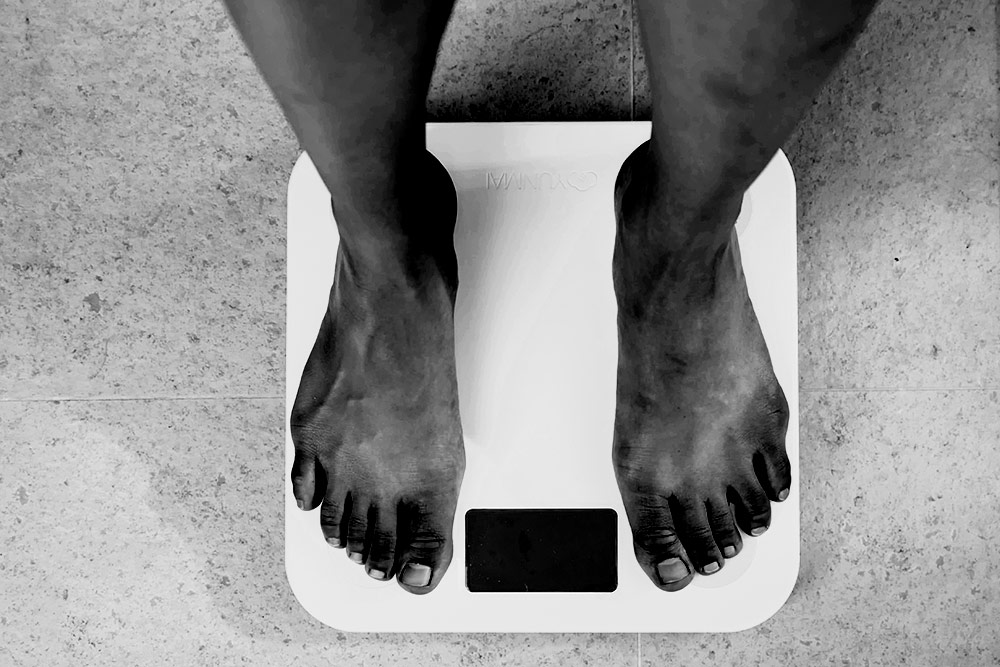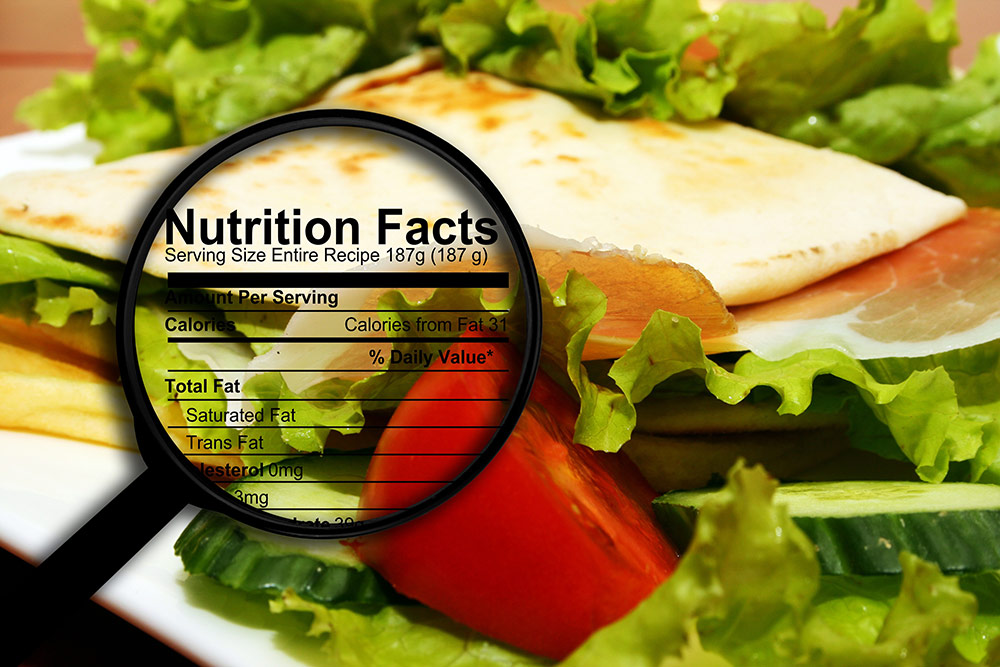Receive newsletter updates
Nutrition requirements for children with cancer
-
Bless a Child Foundation > Learn > Cancer nutrition > Nutrition requirements for children with cancer
This is the fifth article in our series on nutrition during childhood cancer treatment.
One’s physical condition as determined by their diet is called their nutrition status. Nutrition status reveals the degree to which physiological nutrient needs are met for an individual.
Assessment of nutrition status is the foundation of nutritional care; it is an important base for personalizing an individual’s nutritional care in the context of the cause, prevention, or management of disease.
On This Page:
An individual’s nutritional status affects gene-expression and vice versa, with serious implications for many diseases. Chronic diseases, including heart disease, stroke, diabetes, osteoporosis, gastrointestinal disorders and most cancers, are influenced by the underlying nutritional status.
Regular assessment can detect a nutritional insufficiency in the early stages, allowing dietary intake and lifestyle to be improved through nutrition support and counseling before a more severe deficiency and functional change develops1.

Body weight and height are the most commonly used parameters to evaluate overall nutritional status and to classify individuals as at healthy or unhealthy weights according to their Body Mass Index (BMI). BMI is calculated by, dividing one’s weight in kg by his/her height in square meters. BMI= kg/m².
Nutrition affects the body’s ability to resist disease, one’s life span, and the state of one’s physical and mental well-being.
A poor nutrition status manifests in two forms; either as under nutrition (inadequate intake) or as over nutrition (excess intake), with inadequate intake being the most common form among children suffering from cancer in Uganda. According to research, up to 46% of children and young adults with cancer experience malnutrition due to numerous tumor and treatment related factors on the body2.
Diseases and in particular, chronic illnesses, play an important role in the etiology of malnutrition. Children with chronic illness such as cancer are at risk of nutritional problems for several reasons, including the following:
- Children with chronic illnesses frequently have anorexia, which leads to inadequate food intake.
- Increased inflammatory burden and increased metabolic demands which increase caloric needs.
- Any chronic illness that involves the liver or small bowel affects nutrition adversely by impairing digestive and absorptive functions.
- Numerous side effects of chemotherapy and radiotherapy which affect feeding, such as mucositis, nausea, diarrhea, loss of appetite, etc.
Recommended Dietary Allowances (RDA) for children suffering from cancer are based on the needs of generally healthy infants except that calorie and other micro-nutrients amounts may be modified by increasing or decreasing to meet the requirements of each individual child according to the conditions they are facing3.
 Adequate nutrition plays a decisive role on several clinical outcome measures such as treatment response, quality of life, prognosis and time spent on care. Good nutrition enhances appearance and is commonly exemplified by clear skin, erect posture, clear eyes, alert expressions, a good complete blood count (CBC), firm flesh on well-developed bones, aids emotional adjustments, stamina, and promotes a healthy appetite4.
Adequate nutrition plays a decisive role on several clinical outcome measures such as treatment response, quality of life, prognosis and time spent on care. Good nutrition enhances appearance and is commonly exemplified by clear skin, erect posture, clear eyes, alert expressions, a good complete blood count (CBC), firm flesh on well-developed bones, aids emotional adjustments, stamina, and promotes a healthy appetite4.
For infants with special health care requirements such as those with cancer, their daily intake requirements are modified on individual basis from the RDAs of healthy children of the same age and gender.
Meeting the nutrient requirements
Children feed in preparation for the physical and emotional demands of the adolescent growth spurt and adulthood. Eating habits are developed during childhood, once poor habits are developed they can be difficult to change and they can exacerbate emotional and physical problems such as irritability, depression, anxiety, fatigue, and illness.
Therefore, having family members, teachers, and other people in childrens lives who model healthy eating and physical activity behaviors will better equip them for making good food choices5.
Adequate nutrition and the establishment of healthy eating behaviors can help to prevent immediate health problems as well as promote a healthy lifestyle, which in turn may increase response to treatment, reduce the impact of treatment side effects for the sick children and also reduce the risk of children developing chronic conditions, such as obesity, type 2 diabetes, and cardiovascular disease later in life.
Energy requirements
There are very many factors which are considered in deriving energy requirements (RDA) for children because energy needs of each individual child are dependent upon: basal metabolism, thermogenesis, energy cost of growth, child’s gender, age, height, weight, and physical activity levels.
The determination of individualized energy expenditure provides an understanding of the precise energy and substrate requirements for each child during cancer management, thus minimizing the risk of under and over nutrition.
When feeding sick children, it’s important to avoid excesses of energy intake which could lead to obesity6 or deficits in energy intake which can lead to malnutrition in form of chronic energy deficiency7.
Children require energy in ranges according to their age groups, those aged 1 to 6 years require between 9–12g per kilogram of body weight per day (/kgbw/day) while those aged 7 to 12 years require between 7–9g/kgbw/day8.
 This energy can be met through feeding the child on a balanced diet with at least three meals a day and snacking between meals (mostly fruits).
This energy can be met through feeding the child on a balanced diet with at least three meals a day and snacking between meals (mostly fruits).
Carbohydrate and fatty foods are the best sources of energy in our diets. High energy source foods include maize, cassava, potatoes, yam, sorghum, millet, rice, all wheat products, sugar cane, bananas, mangoes, dates, all animal fat, ghee, butter, vegetable oil etc.
Protein Requirements
Proteins are very important in the body. They are used for growth, hormones and enzyme-synthesis, repair of worn out cells in the body, and more. They make up the building blocks of organs, muscles, skin and pretty much everything that matters in the body. Children undergoing cancer treatment require approximately 1–1.5 grams of protein for every kilogram of body weight, thus, a child weighing 18.2 kg needs approximately 18 grams protein per day9. Except for children who suffer from cancers which affect the performance of the kidneys which require them to be placed on a renal diet10.
 It’s important for children to eat high-quality protein dense foods because they usually eat small amounts of food.
It’s important for children to eat high-quality protein dense foods because they usually eat small amounts of food.
Varying between plant and animal sources of protein helps one meet their requirements.
High protein foods include; milk, eggs, fish, chicken, lean pork, beef, beans, low-fat yogurt, cheese, seeds, all nuts, soy, cow peas, peanuts, silver fish, and many more.
Vitamins and minerals
Vitamins and minerals are classified as micro-nutrients; they form a major food group which is required in small quantities because the body cannot synthesize them. Vitamins are important for energy production, immune function, blood clotting, and other functions while minerals play an important role in growth, bone health, transmitting nerve impulses, fluid balance, and several other processes11.
Whenever a child consumes a diet which is insufficient in micro-nutrients, he or she experiences what is known as hidden hunger. According to the World Health Organization, hidden hunger occurs when the quality of food people eat does not meet their micro-nutrient requirements for growth and development and its associated with 10% of all children’s deaths especially vitamin A, iron, and zinc which can worsen illnesses.
Some of the factors that contribute to micro-nutrient deficiencies include poor diet, increased micro-nutrient needs during certain life stages, such as pregnancy and lactation, and health problems such as diseases, infections, or parasites.
 Some of the most important vitamins and minerals include iodine, iron, zinc, calcium, selenium, fluorine, and vitamins A, B6, B12, B1, B2, B3, C, D, E, and many more12.
Consuming a wide variety of fruits at least once each day can help meet these micro-nutrient needs. It’s very important for caretakers of sick children to be able to identify micro-nutrient deficiencies because they manifest on the body (see table at the end of the article).
Some of the most important vitamins and minerals include iodine, iron, zinc, calcium, selenium, fluorine, and vitamins A, B6, B12, B1, B2, B3, C, D, E, and many more12.
Consuming a wide variety of fruits at least once each day can help meet these micro-nutrient needs. It’s very important for caretakers of sick children to be able to identify micro-nutrient deficiencies because they manifest on the body (see table at the end of the article).
Fiber
Fiber is not a mineral, it’s basically the indigestible part of plant food. Dietary fiber is important for our digestive health and regular bowel movements. It also helps you feel fuller for longer, can improve cholesterol and blood sugar levels, and can assist in preventing some diseases such as diabetes, heart disease, and bowel cancer13.
Eating a variety of plant-based foods will help you get enough fiber for each day. This can be done by:
- choosing wholegrain, whole meal and/or high fiber varieties of grain-based foods like bread and pasta
- enjoying a variety of wholegrains, such as rice, oats, quinoa, barley, polenta, and buckwheat
- having two pieces of fruit and five servings of vegetables a day
 Food sources of dietary fiber include; bananas, whole meal bread, vegetables, cereals, and fruits and vegetables with edible skin.
Children’s likes and dislikes may change over time and parents should respect this as much as possible. Children should be offered nutrient-dense foods because the amount eaten often will be small. Allowing the child to assist in purchasing and preparing food is often a good way of arousing interest in the food and a desire to eat it14.
Food sources of dietary fiber include; bananas, whole meal bread, vegetables, cereals, and fruits and vegetables with edible skin.
Children’s likes and dislikes may change over time and parents should respect this as much as possible. Children should be offered nutrient-dense foods because the amount eaten often will be small. Allowing the child to assist in purchasing and preparing food is often a good way of arousing interest in the food and a desire to eat it14.
Modifying diets to meet energy and micro-nutrient requirements for sick children
Diet modification is a component of diet therapy where a balanced selection of foods is combined for individuals with special medical and dietary needs. Modified or therapeutic diets are modifications of the regular diet and are designed to meet specific patient needs. These modifications include:
Diet therapy promotes a balanced selection of foods vital for good health by combining foods appropriate for each individual, especially for those with special medical and dietary needs. Some of the objectives of diet therapy include; increasing body weight, resting particular organs, overcoming deficiencies, easing digestion, and many more.
Examples of modified/therapeutic diets include; soft diet, liquid diet, high calorie diet, high protein diet, low calorie diet, low protein diet, high residue diet, low residue diet, low sodium diet, bland diet, low carbohydrate-high protein diet etc.
More information on each type of diet and its applications in paediatric cancer management, shall be discussed in subsequent articles.
This table shows some of the most common ways in which micro-nutrient deficiencies manifest on the body. It also contains a list of foods which can be incorporated into the patients’ diet to reverse each deficiency15.
| Sign/Visible changes | Nutrient deficiency | Foods to eat | |
|---|---|---|---|
| Hair changes (not easy to detect in cancer patients due to hair loss) | Hair is spare and thin | Zinc, Protein, Biotin | Organ meats, Yeast, Egg yolks, Cheese, Legumes, Leafy greens, Cauliflower, Mushrooms and Nuts |
| Hair is easy to pull out | Protein | Beans, peas, nuts, poultry, beef, milk, eggs, ghee, butter, soy | |
| Coiled or corkscrewed hair | Vitamin A & C | Vitamin A fortified foods, pawpaw, mangoes, citrus fruits | |
| Mouth changes | Glossitis (wounds on the tongue) | Riboflavin, niacin (vitamin B3), folic acid, vitamin B12 & protein | A variety of fruits, leafy vegetables, plant and animal protein |
| Bleeding and spongy gums | Vitamin C, K, A, folic acid, and niacin (B3) | A variety of fruits and vegetables, milk, eggs, fortified breakfast cereals, nuts | |
| Angular stomatitis, cheilosis (wounds at corner of mouth), & fissured tongue | Vitamin B2, B6 & niacin (B3) | Eggs, dairy products, beans, fish, nuts, legumes | |
| Sore mouth and tongue | Vitamin B12, B6, C, folic acid, and iron | Citrus fruits, dairy products, fish, leafy vegetables, beef, eggs | |
| Leukoplakia (furry white tongue and gums) | Vitamin A, B12, folic acid & niacin (B3) | A variety of fruits and vegetables, milk, eggs, fortified breakfast cereals, nuts, and legumes | |
| Eye changes | Night blindness | Vitamin A | Organ meats, milk, eggs, carrots, sweet potatoes, spinach |
| Conjunctival inflammation (painful red eyes), photophobia (light sensitivity), blurring | Vitamin B2, A | Organ meats, milk, eggs, carrots, sweet potatoes, spinach, lean meats, vitamin A fortified foods | |
| Nail changes | Spooning (extra curving of fingernails), also called clubbing | Iron | Beans, beetroot, hibiscus |
| Transverse lines (clearly visible ridges on nail) | Protein | Dairy products, poultry, eggs, beans, peas, soy, fish, peas | |
| Skin changes | Flaking dermatitis | Protein, carbohydrates, vitamins B2 & A, zinc, and niacin (B3) | Dairy products, poultry, eggs, beans, peas, soy, fish, peas, all roots tubers, corn, wheat, cereals, lean beef, leafy vegetables |
| Pigmentation desquamation (patchy discoloured skin) | Niacin (B3), protein and carbohydrate | Dairy products, poultry, eggs, beans, peas, soy, fish, peas, all roots tubers, corn, wheat, cereals, lean beef, leafy, vegetables Variety of fruits and vegetables | |
| Bruising | Vitamin K, C, & folic acid | A variety of fruits and vegetables, milk, eggs, fortified breakfast cereals, nuts, legumes, fish | |
| Pallor (paleness) | Folic acid, iron, vitamin B12 | A variety of fruits and vegetables, milk, eggs, fortified breakfast cereals, nuts, legumes, organ meats, milk, carrots, lean meats | |
| Follicular hyperkeratosis (thickening and hardening of skin around hair follicles) | Vitamin B & C | Citrus fruits, fortified beverages, sweet red/green pepper | |
| Neck changes | Swollen neck/thyroid gland/goiter | Iodine | Iodized salt |
| Bone and joint changes | Rickets | Vitamin D | Sunlight, fortified foods e.g. yoghurt, milk |
| Scurvy (bleeding, swollen gums) | Vitamin C | Citrus fruits such as pineapples, oranges, lemon, guava, kiwi, vitamin C fortified beverages | |
Sample guide for creating a balanced diet
Breakfast- Protein (milk/soy/eggs/yoghurt/peanut)
- Carbohydrate (all wheat products/millet/sorghum/maize etc.) Fruit (banana/mango/pawpaw/apples etc.)
- Fruit (bananas/oranges/watermelon etc.)
- Carbohydrate(rice/matooke/cassava/millet/maize/sorghum/potatoes/yam etc.)
- Protein (beans/fish/beef/poultry/pork/cowpeas etc.)
- Vegetable (Nakati/cabbage/Doodo/Sukuma Wiki/Malakwang etc.)
- Fruit (juies of pineapple, orange, passion-fruit, mango, watermelon, lemon, avocado etc.)
- Water
- Fruit(pineapple/mango/banana/watermelon etc.)
- Carbohydrate(rice/matooke/cassava/millet/maize/sorghum/potatoes/yam etc.)
- Protein (beans/fish/beef/poultry/pork/cowpeas etc.)
- Vegetable (Nakati/cabbage/Doodo/Sukuma Wiki/Malakwang etc.)
- Fruit (Avocado/apples/grapes/peaches etc.)
- water
-
Evening snack
In designing a menu for a sick child, pick foods from a wide variety of sources so that you meet the diet diversity score. Try to make the children participate in selecting the foods to be prepared to create interest and always create a jolly environment when it’s time to feed, so that the child can associate food with happiness. “Always Remember, moderation is key to a healthy diet.”
The next article concerns itself with the specifics of diet therapy.
Photos by I Yunmai, Bart Heird, Caroline Attwood, Ilyuza Mingazova and Stephanie Harvey via Unsplash.
Notes [ + ]
| 1. | ↲ | Mahan, K. L., & Raymond, J. L. Krause’s Food and The Nutrition Care Process. St. Louis, Missouri: Elsevier, 2017. |
| 2. | ↲ | Smith, D. E., Stevens, M. C., & Booth, I. W. (1991). “Malnutrition at Diagnosis of Malignancy in Childhood: Common but Mostly Missed.” Eur J Pediatr, 150:318-22. |
| 3. | ↲ | Judith, B. E., Janet, I. S., U.Beate, K., Ellen, L., Maureen, M. A., Carolyn, S.,…Nancy, W. H. Nutrition Through the Life Cycle, Fourth Edition. Belmont: Cengage, 2011. |
| 4. | ↲ | Richard, K. A., Grosfeld, J. L., Coates, T. D., Weetman, R., & Baehner, R. L. (1986). “Advances in Nutrition Care of Children with Neoplastic Diseases: A Review of Treatment, Research and Application.” J Am Diet Assoc, 86:1666–76. |
| 5. | ↲ | Roth, R. A. Nutrition and Diet Therapy. Indiana: Cengage, 2010. |
| 6. | ↲ | Speiser, P. W., Rudolf, M. C., & Anhalt, H. (2005). “Consensus Statement: Childhood Obesity.” J Clin Endocrinol Metab, 90:1871–1887. |
| 7. | ↲ | Kurpad, A. V., Muthayya, S., & Vaz, M. (2005). “Consequences of Inadequate Food Energy and Negative Energy Balance in Adults and Children.” Public Health Nutr, 8:1053–1076. |
| 8. | ↲ | Uma, R., Sanjay, C., & MM, H. (2005). “Nutritional Support In The Critically Ill Child.” Med J Armed Forces India, 61(1): 45–50. |
| 9. | ↲ | Field, L. “Protein – How much is enough? Can you have too much?.” Retrieved from Feed Nutrition Consulting website, October 2, 2019. |
| 10. | ↲ | Nephcure Kidney International. “Renal Diet.” Retrieved from Nephcure.org, October 2, 2019. |
| 11. | ↲ | Lizzie, S. “Micronutrients: Types, Functions, Benefits and More.” Retrieved from Healthline, September 27, 2018. |
| 12. | ↲ | Theodore, T. H. (2010). “Micronutrient Deficiency Conditions:Global Health Issues.” Public Health Reviews Vol.32, No 1, 243–255. |
| 13. | ↲ | Nutrition Australia VicDivision. “Fibre.” Retrieved from Nutrition Australia, October 1, 2019. |
| 14. | ↲ | Roth, R. A. Nutrition and Diet Therapy. Indiana: Cengage, 2010. |
| 15. | ↲ | Elamin, A. Assesment of Nutrition Status. Oman: Sultan Qaboos University, 2017. |
Plot 140 Sir Apollo Kaggwa Road, Makerere Kikoni, Kampala
Plot 47 Andrews-Kakiika, Mbarara
